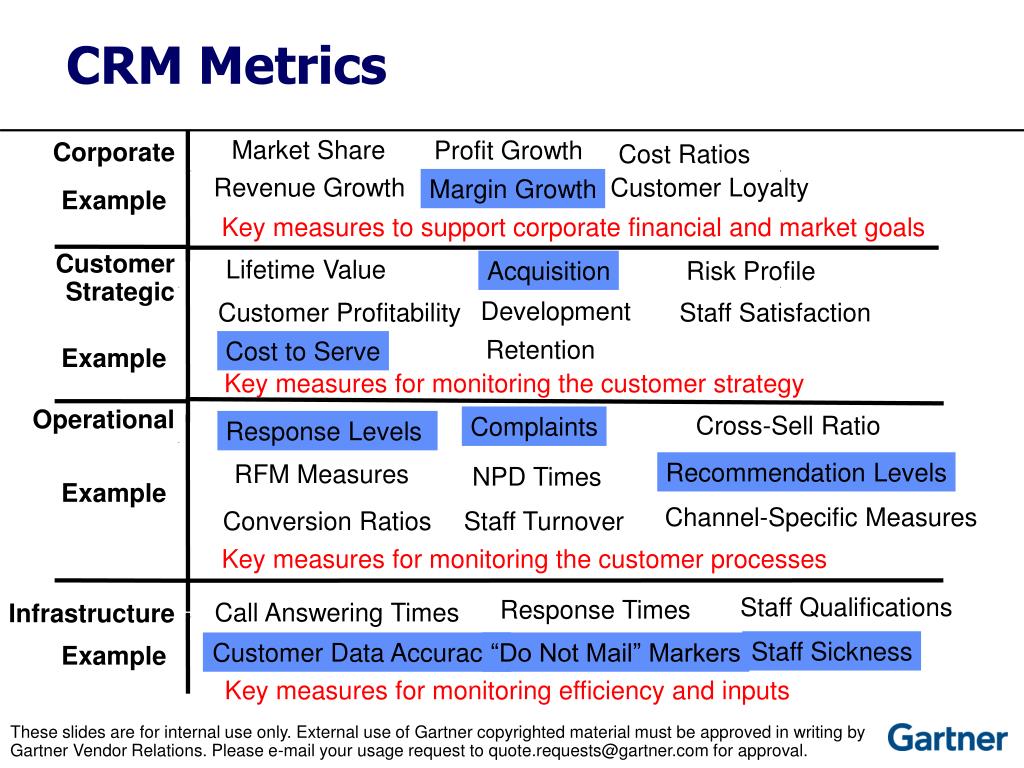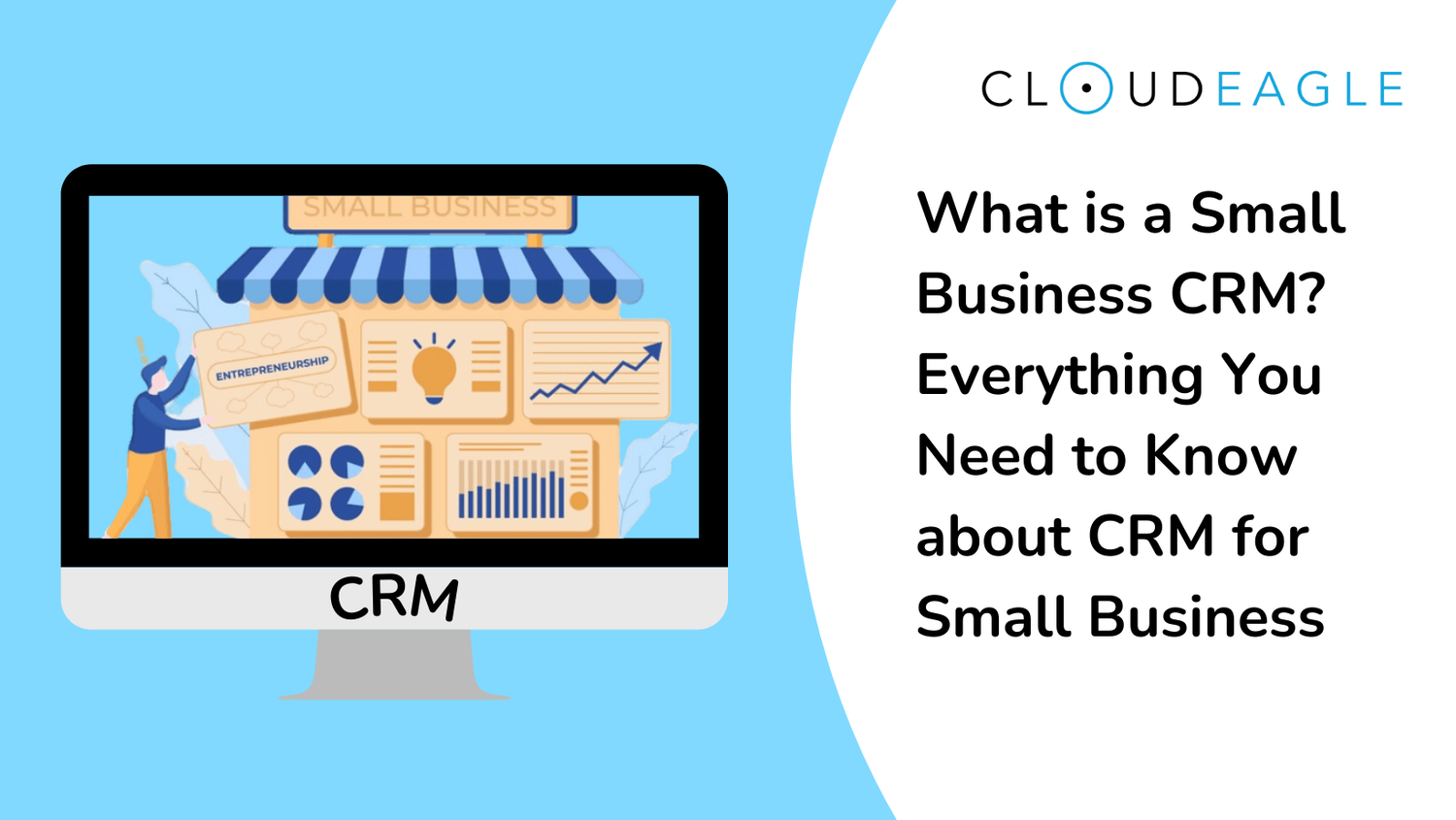
Unlocking Growth: Essential CRM Marketing Metrics to Track and Thrive
In the dynamic world of marketing, staying ahead of the curve is crucial. As businesses strive to understand their customers better and optimize their strategies, Customer Relationship Management (CRM) systems have become indispensable tools. But simply having a CRM isn’t enough. The real magic lies in leveraging CRM marketing metrics to gain actionable insights, refine your approach, and ultimately, drive growth. This comprehensive guide delves into the essential CRM marketing metrics you need to track, understand, and use to propel your business forward.
What are CRM Marketing Metrics and Why Do They Matter?
CRM marketing metrics are the key performance indicators (KPIs) that provide quantifiable data about your marketing efforts within your CRM system. They offer a window into the effectiveness of your campaigns, customer interactions, and overall business performance. Tracking these metrics is essential for several reasons:
- Performance Evaluation: Metrics provide a clear picture of what’s working and what’s not. They allow you to assess the success of your campaigns and identify areas for improvement.
- Data-Driven Decision Making: Instead of relying on guesswork, metrics empower you to make informed decisions based on concrete data.
- Optimization: By analyzing metrics, you can identify opportunities to optimize your marketing strategies, improve customer engagement, and increase ROI.
- Resource Allocation: Metrics help you allocate your resources (budget, time, and personnel) more effectively, focusing on the activities that yield the best results.
- Improved Customer Understanding: Metrics provide valuable insights into customer behavior, preferences, and needs, enabling you to personalize your marketing efforts and build stronger relationships.
Core CRM Marketing Metrics to Track
The specific metrics you track will depend on your business goals and the nature of your marketing activities. However, some core metrics are universally important for understanding and improving your CRM marketing performance.
1. Customer Acquisition Cost (CAC)
Customer Acquisition Cost (CAC) measures the total cost of acquiring a new customer. It’s a fundamental metric that helps you understand how efficiently you’re converting leads into paying customers.
How to Calculate:
CAC = (Total Marketing & Sales Costs) / (Number of New Customers Acquired)
Why it Matters:
- Indicates the financial efficiency of your acquisition efforts.
- Helps determine the profitability of each customer.
- Allows you to compare the cost-effectiveness of different marketing channels.
Tips for Improvement:
- Optimize your marketing campaigns to target high-quality leads.
- Refine your sales process to improve conversion rates.
- Evaluate the performance of different marketing channels and allocate resources accordingly.
2. Customer Lifetime Value (CLTV)
Customer Lifetime Value (CLTV) predicts the total revenue a customer will generate throughout their relationship with your business. It’s a crucial metric for understanding the long-term value of your customers and making informed decisions about customer retention and acquisition strategies.
How to Calculate:
There are various formulas for calculating CLTV, but a simplified version is:
CLTV = (Average Purchase Value) x (Average Purchase Frequency) x (Average Customer Lifespan)
Why it Matters:
- Helps determine the maximum you can spend to acquire a customer while remaining profitable.
- Guides your customer retention strategies, focusing on high-value customers.
- Provides insights into the long-term profitability of your business.
Tips for Improvement:
- Implement customer loyalty programs to increase purchase frequency.
- Offer personalized experiences to improve customer satisfaction and retention.
- Focus on providing excellent customer service to extend customer lifespan.
3. Conversion Rate
Conversion Rate measures the percentage of leads who complete a desired action, such as making a purchase, signing up for a newsletter, or requesting a demo. It’s a critical metric for assessing the effectiveness of your marketing campaigns and sales processes.
How to Calculate:
Conversion Rate = (Number of Conversions) / (Number of Leads) x 100%
Why it Matters:
- Indicates how effectively you’re turning leads into customers.
- Helps identify bottlenecks in your sales funnel.
- Allows you to optimize your marketing efforts for higher conversion rates.
Tips for Improvement:
- Optimize your landing pages and website for conversions.
- Use compelling calls to action.
- Nurture leads with targeted content and personalized experiences.
- Streamline the sales process.
4. Churn Rate
Churn Rate measures the percentage of customers who stop doing business with you over a specific period. It’s a crucial metric for understanding customer retention and identifying areas for improvement in customer satisfaction and service.
How to Calculate:
Churn Rate = (Number of Customers Lost) / (Total Number of Customers at the Beginning of the Period) x 100%
Why it Matters:
- Indicates the rate at which you’re losing customers.
- Highlights potential issues with customer satisfaction, product quality, or pricing.
- Affects your overall revenue and profitability.
Tips for Improvement:
- Proactively engage with customers to understand their needs and address any issues.
- Provide excellent customer service.
- Implement customer loyalty programs.
- Gather customer feedback and act on it.
5. Customer Satisfaction Score (CSAT)
Customer Satisfaction Score (CSAT) measures how satisfied customers are with your products, services, or overall experience. It’s usually gathered through surveys and provides valuable insights into customer sentiment.
How to Calculate:
CSAT is typically calculated by averaging the responses to a satisfaction survey question (e.g., “How satisfied were you with your experience?”) on a scale (e.g., 1-5 or 1-10).
Why it Matters:
- Indicates the level of customer satisfaction.
- Helps identify areas for improvement in your products, services, or customer experience.
- Correlates with customer loyalty and retention.
Tips for Improvement:
- Regularly survey customers to gather feedback.
- Analyze survey results to identify areas for improvement.
- Take action to address customer concerns and improve their experience.
6. Net Promoter Score (NPS)
Net Promoter Score (NPS) measures customer loyalty and the likelihood of customers recommending your business to others. It’s a powerful metric for understanding customer advocacy and predicting future growth.
How to Calculate:
NPS is calculated by asking customers a single question: “On a scale of 0 to 10, how likely are you to recommend our company/product/service to a friend or colleague?”
- Promoters (9-10): Loyal enthusiasts who will keep buying and refer others.
- Passives (7-8): Satisfied but unenthusiastic customers who are vulnerable to competitive offerings.
- Detractors (0-6): Unhappy customers who can damage your brand and impede growth.
NPS = % of Promoters – % of Detractors
Why it Matters:
- Indicates customer loyalty and advocacy.
- Predicts future growth and revenue.
- Provides insights into customer satisfaction and brand perception.
Tips for Improvement:
- Focus on turning detractors into promoters.
- Provide excellent customer service.
- Gather feedback from customers and act on it.
7. Marketing Qualified Lead (MQL) to Sales Qualified Lead (SQL) Rate
This metric tracks the percentage of Marketing Qualified Leads (MQLs) that convert into Sales Qualified Leads (SQLs). MQLs are leads that have shown interest in your product or service, while SQLs are leads that sales teams deem ready for direct follow-up. This metric is crucial for understanding the effectiveness of your lead nurturing efforts and the handoff between marketing and sales.
How to Calculate:
(Number of SQLs) / (Number of MQLs) * 100%
Why it Matters:
- Measures the efficiency of lead qualification processes.
- Identifies gaps in lead nurturing strategies.
- Helps align marketing and sales efforts.
Tips for Improvement:
- Refine lead scoring criteria.
- Improve lead nurturing campaigns.
- Ensure seamless communication between marketing and sales teams.
8. Sales Cycle Length
Sales Cycle Length measures the time it takes to convert a lead into a paying customer. A shorter sales cycle generally indicates a more efficient sales process and a faster return on investment.
How to Calculate:
Calculate the average time between the first contact with a lead and the closure of a deal.
Why it Matters:
- Indicates the efficiency of the sales process.
- Identifies bottlenecks in the sales funnel.
- Helps forecast revenue and optimize resource allocation.
Tips for Improvement:
- Streamline the sales process.
- Provide sales representatives with the necessary tools and training.
- Automate repetitive tasks.
9. Email Marketing Metrics
Email marketing remains a powerful tool within CRM. Tracking email-specific metrics is vital for understanding how your audience engages with your content and how effective your email campaigns are. Key email metrics include:
- Open Rate: The percentage of recipients who opened your email.
- Click-Through Rate (CTR): The percentage of recipients who clicked on a link in your email.
- Conversion Rate: The percentage of recipients who completed a desired action after clicking a link in your email (e.g., making a purchase).
- Unsubscribe Rate: The percentage of recipients who unsubscribed from your email list.
- Bounce Rate: The percentage of emails that were not delivered.
Why it Matters:
- Assesses the effectiveness of your email content, subject lines, and calls to action.
- Identifies areas for improvement in your email marketing strategy.
- Helps segment your audience and personalize your email campaigns.
Tips for Improvement:
- Optimize your subject lines to increase open rates.
- Create engaging and relevant email content.
- Segment your audience and personalize your email campaigns.
- A/B test different elements of your emails to see what performs best.
10. Website Traffic and Engagement Metrics
Understanding how your CRM-driven marketing efforts are driving traffic and engagement on your website is crucial. Integrate your CRM with your website analytics tools (like Google Analytics) to track the following:
- Website Traffic Sources: Identify which marketing channels are driving the most traffic to your website.
- Bounce Rate: The percentage of visitors who leave your website after viewing only one page.
- Time on Page: The average amount of time visitors spend on a specific page.
- Pages per Session: The average number of pages a visitor views during a session.
- Conversion Rate: Track conversions that originate from your website.
Why it Matters:
- Provides insight into the effectiveness of your marketing campaigns in driving traffic.
- Helps identify areas for improvement in your website content and design.
- Enables you to understand user behavior on your website.
Tips for Improvement:
- Optimize your website for search engines (SEO).
- Create compelling and engaging website content.
- Improve your website’s user experience (UX).
- Use clear calls to action.
Implementing CRM Marketing Metrics: A Step-by-Step Guide
Tracking CRM marketing metrics is not just about collecting data; it’s about using that data to drive meaningful improvements. Here’s a step-by-step guide to help you implement and utilize these metrics effectively:
1. Define Your Goals and Objectives
Before you start tracking any metrics, clearly define your marketing goals and objectives. What do you want to achieve with your CRM marketing efforts? Are you trying to increase sales, improve customer retention, or generate more leads? Your goals will determine which metrics are most relevant to track.
2. Choose the Right Metrics
Based on your goals, select the CRM marketing metrics that are most relevant to your business. Don’t try to track everything at once. Start with a few key metrics and gradually add more as you become more comfortable.
3. Set Up Your CRM and Integrate with Other Tools
Ensure your CRM system is properly set up and configured to track the metrics you’ve chosen. Integrate your CRM with other marketing tools, such as email marketing platforms, website analytics tools, and social media platforms, to get a comprehensive view of your marketing performance.
4. Establish a Baseline
Before you start making any changes, establish a baseline for your metrics. This will give you a point of comparison to measure your progress over time. Review your historical data, if available, and document the current state of your key metrics.
5. Track and Analyze Your Metrics Regularly
Track your chosen metrics on a regular basis (e.g., weekly, monthly, quarterly). Analyze the data to identify trends, patterns, and insights. Use data visualization tools (e.g., charts, graphs) to make the data easier to understand.
6. Identify Areas for Improvement
Based on your analysis, identify areas where your marketing efforts can be improved. Are your conversion rates low? Is your churn rate too high? Are your email open rates dropping? Focus on addressing the specific issues that are hindering your performance.
7. Implement Changes and Test
Make changes to your marketing strategies and tactics based on your analysis. This could involve anything from optimizing your website to changing your email marketing campaigns. Test your changes to see if they’re effective. A/B testing is a great way to compare different approaches and see which one yields better results.
8. Monitor and Refine
Continuously monitor your metrics to see if your changes are having the desired effect. If not, refine your strategies and tactics as needed. The process of tracking and analyzing metrics is an ongoing cycle of improvement.
9. Communicate Your Findings
Share your findings with your team and stakeholders. This will help ensure that everyone is on the same page and working towards the same goals. Use data to justify your decisions and demonstrate the value of your marketing efforts.
Tools and Technologies for Tracking CRM Marketing Metrics
Several tools and technologies can help you track and analyze CRM marketing metrics. Here are some popular options:
- CRM Systems: Most CRM systems, such as Salesforce, HubSpot, Zoho CRM, and Microsoft Dynamics 365, have built-in reporting and analytics capabilities that allow you to track key marketing metrics.
- Marketing Automation Platforms: Marketing automation platforms, such as Marketo, Pardot, and ActiveCampaign, offer advanced analytics and reporting features.
- Business Intelligence (BI) Tools: BI tools, such as Tableau, Power BI, and Google Data Studio, allow you to create custom dashboards and visualizations to track and analyze your metrics.
- Website Analytics Tools: Tools like Google Analytics provide valuable insights into website traffic, user behavior, and conversions.
- Email Marketing Platforms: Email marketing platforms, such as Mailchimp, Constant Contact, and Sendinblue, provide detailed reports on email open rates, click-through rates, and other key metrics.
Common Challenges and How to Overcome Them
Implementing CRM marketing metrics can come with its own set of challenges. Here are some common obstacles and how to address them:
- Data Accuracy: Inaccurate data can lead to flawed insights and decisions. Ensure your data is clean, consistent, and up-to-date. Implement data validation rules and regularly audit your data.
- Integration Issues: Integrating your CRM with other marketing tools can be complex. Choose tools that seamlessly integrate with your CRM and follow best practices for data mapping and synchronization.
- Lack of Resources: Tracking and analyzing metrics requires time and resources. Allocate sufficient budget and personnel to support your efforts. Consider outsourcing some tasks if needed.
- Overwhelm: Trying to track too many metrics can be overwhelming. Focus on the most important metrics first and gradually add more as needed.
- Lack of Buy-In: Getting buy-in from your team and stakeholders is crucial. Communicate the value of tracking metrics and share your findings regularly.
The Future of CRM Marketing Metrics
The landscape of CRM marketing is constantly evolving, and the metrics we track will continue to adapt. Here are some trends to watch:
- AI-powered Analytics: Artificial intelligence (AI) and machine learning (ML) are being used to automate data analysis, identify patterns, and predict future trends.
- Personalization: Marketers are increasingly using data to personalize customer experiences and deliver targeted content.
- Focus on Customer Experience: Metrics related to customer experience (e.g., CSAT, NPS) will become even more important as businesses strive to build stronger customer relationships.
- Cross-Channel Attribution: Marketers will need to track and attribute conversions across multiple channels to understand the impact of their marketing efforts.
- Privacy and Data Security: With increasing concerns about data privacy, marketers will need to prioritize data security and comply with relevant regulations.
Conclusion: The Power of Data-Driven CRM Marketing
In conclusion, CRM marketing metrics are essential for driving growth and success. By tracking the right metrics, analyzing the data, and taking action based on your findings, you can optimize your marketing efforts, improve customer relationships, and achieve your business goals. Embrace the power of data-driven decision-making and watch your business thrive. Remember, the journey of improvement is ongoing. Continuously monitor, analyze, and refine your strategies to stay ahead of the curve and create lasting value for your customers and your business.
By consistently measuring and refining your strategies based on these CRM marketing metrics, you’ll be well-equipped to make data-driven decisions, optimize your campaigns, and foster lasting customer relationships. It’s not just about collecting data; it’s about using that data to unlock growth and propel your business to new heights.


